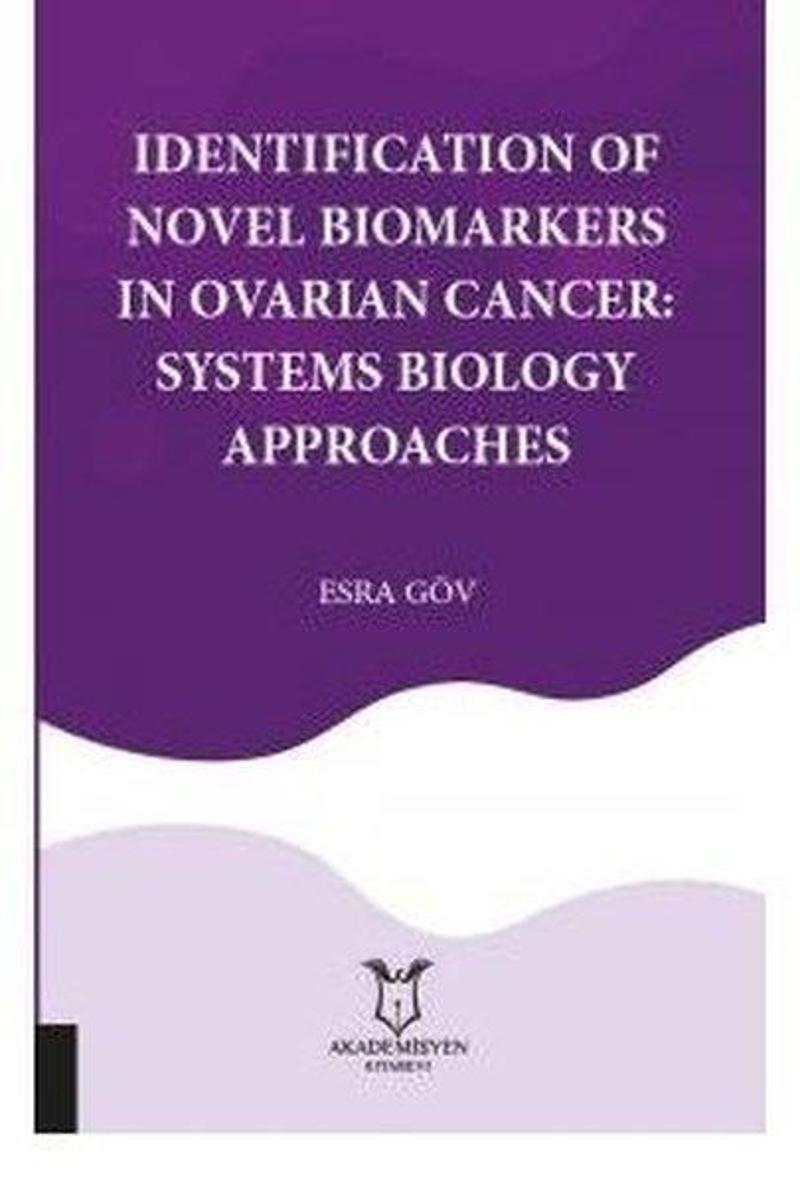Identification Of Novel Biomarkers In Ovarian Cancer-Systems Biology Approaches Esra Göv
1. Introduction
1.1. RNA-based ovarian cancer research
1.1.1. RNA expression profiling in ovarian cancer
1.1.2. Expression profiling of microRNAs
1.1.3. Ovarian cancer associated signaling pathways
1.1.4. Integrative approaches in ovarian cancer research
1.2. Ovarian cancer research should meet integrative multi-omics science
1.2.1. Human transcriptional regulatory network
1.2.2. Integration of transcriptome data with biological networks
1.2.3. Differential co-expression network in ovarian cancer
1.2.4. Differential interactome in ovarian cancer
1.3. Ovarian diseases including polycystic ovarian syndrome (PCOS), ovarian endometriosis and ovarian cancer
1.4. Aim of the Study
2. Materials and Methods
2.1. Reconstruction of transcriptional regulatory network of H. sapiens
2.2. Topological analysis of transcriptional regulatory networks
2.3. Selection of gene expression datasets
2.4. Identification of differentially expressed genes
2.5. Reconstruction of ovarian cancer specific subnetwork
2.6. Analysis of network performance
2.7. Robustness analysis
2.8. Identification of reporter receptors, membrane proteins, transcription factors and miRNAs
2.9. Determination of reporter metabolites
2.10. Enrichment analyses of DEGs and reporter metabolites
2.11. Comprehensive networks in CEPI, stroma and tumor tissues
2.12. Construction of co-expression networks in diseased and healthy states
2.13. Determination of network modules and their differential co-expression
2.14. Prognostic power analysis of module genes
2.15. Identification of transcriptional regulatory network including module genes
2.16. Screening the differential expression of the module in different tumor types
2.17. Differential Protein Interactome Analysis
2.17.1. Protein interaction data
2.17.2. Determination of entropies corresponding to each interaction
3. Results and Discussion
3.1. A generic transcriptional regulatory network of H. sapiens was reconstructed
3.1.1. The network motifs provide a deeper investigation into the topological architecture
3.1.2. Core network topology endorses the previous findings on miRNA and gene interactions
3.1.3. Target genes may be regulated in cooperation of regulators
3.1.4. A target gene may be regulated by multiple upstream effectors in a hierarchical operation
3.1.5. Process-specific subnetworks were also dominated by hierarchical operation of regulators
3.1.6. Ovarian cancer specific transcriptional regulatory network
3.2. Reporter biomolecules of ovarian cancer were identified through network medicine perspective
3.2.1. Transcriptomic signatures of ovarian CEPI, stroma and tumor tissues
3.2.2. Signaling receivers: reporter receptors and membrane proteins
3.2.3. Regulatory signatures: reporter transcription factors and microRNAs
3.2.4. Metabolomic signatures: reporter metabolites
3.2.5. Biological insights of transcriptomic signatures and reporter metabolites
3.2.6. Tissue specific comprehensive networks with enriched reporter biomolecules
3.3. Differential co-expression analysis reveals a novel prognostic gene module in ovarian cancer
3.3.1. Differential gene expression in ovarian cancer
3.3.2. Co-expression profiles in ovarian cancer
3.3.3. Co-expressed gene modules in diseased and healthy states
3.3.4. The module was differentially co-expressed in ovarian cancer
3.3.5. Prognostic performance of the gene module
3.3.6. Transcriptional regulators of the module genes
3.3.7. Differential expression of the module genes in different tumor types
3.4. Ovarian cancer differential interactome and network entropy analysis reveal new candidate biomarkers
3.4.1. DNA repair responses
3.4.2. Alternative splicing mechanisms and abnormal protein expression in tumor cells
3.4.3. Separation of sister chromatids through ESPL1
3.4.4. Suppression of EGFR-associated proliferation via EGFR endocytosis and retinoids
3.4.5. Nucleocytoplasmic translocation of estrogen receptor in ovarian cancer
3.4.6. Cellular response to malignancies
3.5. Integrative and comperative analysis of ovarian diseases point out molecular signatures
3.5.1. Transcriptomic signatures: Differentially expressed genes
3.5.2. Metabolic signatures: Reporter metabolites
3.5.3. Regulatory signatures: Reporter TFs and miRNAs
4. Conclusion
5. References
(Tanıtım Bülteninden)
Neden idefix?
Siparişinizi teslim aldığınız tarihten itibaren 14 gün içinde iade edebilir, iade sürecinin tamamlanmasının ardındansa ödemenizi hızla geri alabilirsiniz.
Kullanıcı dostu ara yüzümüz tüm ihtiyaçlarınıza eksiksiz yanıt verebilmek için tasarlandı. Deneyiminizi uçtan uca kusursuz kılmak adına çağrı merkezimiz ve canlı destek hattımızla ihtiyaç duyduğunuz her anda yanınızdayız!
Siparişlerinizin bir an önce ulaşması için sabırsızlandığınızın farkındayız. Sunduğumuz farklı teslimat seçenekleri arasından size en uygununu belirlemeniz, siparişinizi olabildiğince çabuk veya dilediğiniz zaman aralığında sorunsuz bir biçimde teslim etmemiz için yeterli.
